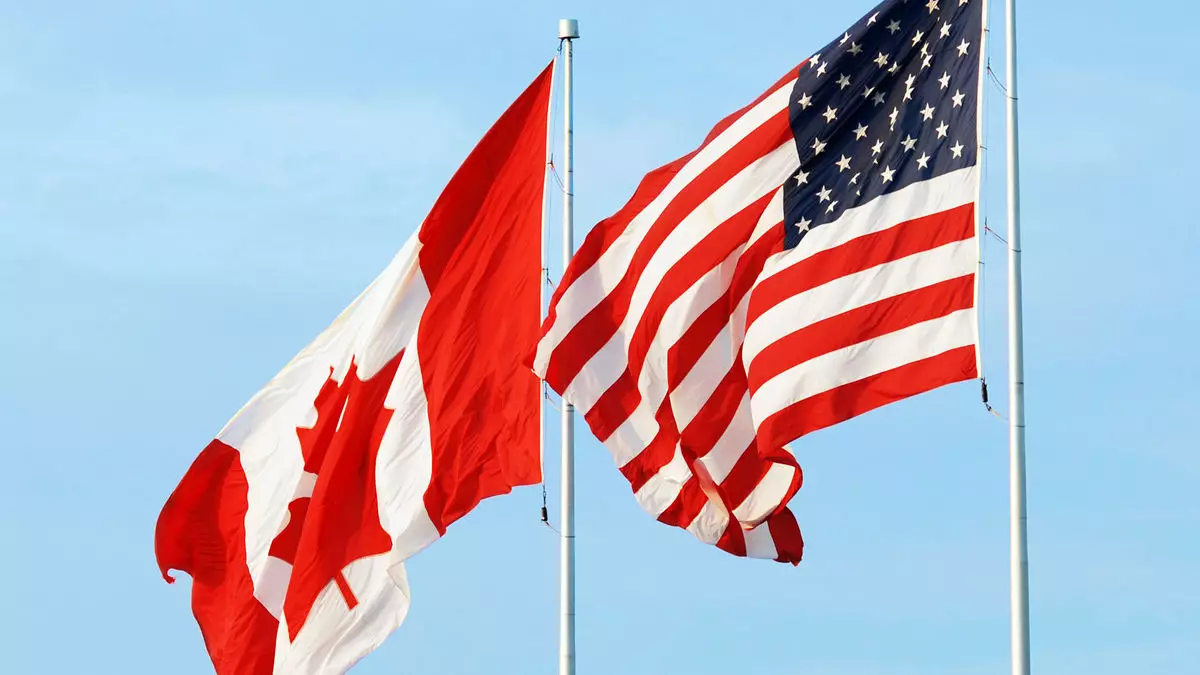The travel corridor between Canada and the United States, once a bustling thoroughfare of summer vacations and cross-border getaways, has recently hit a disheartening snag. An astonishing decline in advanced flight bookings, exceeding a catastrophic 70%, paints a grim picture for the aviation industry, starkly reflecting the strained relationship between the two neighbors. The situation has escalated due to political tensions and shifts in currency values, the combined effect of which has left would-be travelers anxious about their summer plans.
Changes in Travel Dynamics: An Analytical Dive
At the forefront of this disruption is a shocking analysis released by the aviation data company OAG. Their findings reveal that advanced bookings for flights between Canada and the U.S. have plummeted drastically over the coming summer months. OAG’s senior analyst John Grant likens the current trend to a market collapse, raising serious questions about the sustainability of travel patterns between these two countries. The data compares booking numbers from last year to the current figures, revealing a stark contrast that speaks to broader economic and political issues. As Grant aptly noted, the drop affects every month leading up to September, emphasizing a widespread reluctance among Canadians to book their flights south.
Impact of Political Climate: A Weakened Bond
This discontent can, to a significant extent, be traced back to the current political climate. The rhetoric surrounding trade, initiated by President Trump’s policies, has negatively influenced perceptions in Canada. Remarks about Canada potentially becoming the 51st U.S. state have not only enraged Canadians but also fostered a sense of distrust, prompting many to reconsider their travel plans. It seems that while the bonds between the countries have historically been strong, events have transitioned them into a fractured relationship, leading to this unprecedented decline in travel.
The Economic Factor: Currency Woes and Travel Incentives
Adding to this unfortunate scenario is the weakening Canadian dollar. As of late March, the exchange rate indicated that 100 Canadian dollars equated to a mere $70 U.S. dollars. This discrepancy has left many Canadians feeling disheartened and questioning the affordability of American trips. In response to these economic pressures, cruise lines like Oceania Cruises have begun enticing Canadian travelers with promotional offers allowing bookings in Canadian dollars. While this initiative provides some relief, it also highlights the urgent need for travel companies to adapt to the evolving economic landscape.
Airline Adjustments: Tentative Moves in Uncertain Times
Despite the extensive drop in bookings, the airline industry has responded with only minor schedule adjustments so far. While more than 320,000 one-way seats have been eliminated from the U.S.-Canada market between March and October, this only represents a 2.6% decline—a figure that feels significantly understated against the backdrop of massive downturns in bookings. The largest cuts are evident during the peak months of July and August, where adjustments exceed 3.5%. However, airlines are understandably hesitant to make sweeping changes, particularly given the logistical challenges of rescheduling already available routes. As noted by industry experts, the dilemma arises: what other markets could airlines possibly tap into when they’re already stretched thin?
The Way Forward: Exploring New Opportunities
Despite these grim circumstances, there’s a flicker of hope. WestJet, for instance, has redirected some of its planned U.S. capacity toward Europe, demonstrating a willingness to adapt to changing market conditions. Though the current landscape may be bleak for cross-border travel, forward-thinking companies that pivot to capture new opportunities could perhaps emerge stronger, ready to cater to evolving traveler preferences in a post-pandemic world.
The summer of 2023 may not be the comeback season anyone anticipated, but therein lies an opportunity for innovation and resilience. The travel industry, with its innate ability to rebound, can navigate these turbulent waters if it remains agile and responsive to the profound changes influencing traveler behavior.


Leave a Reply